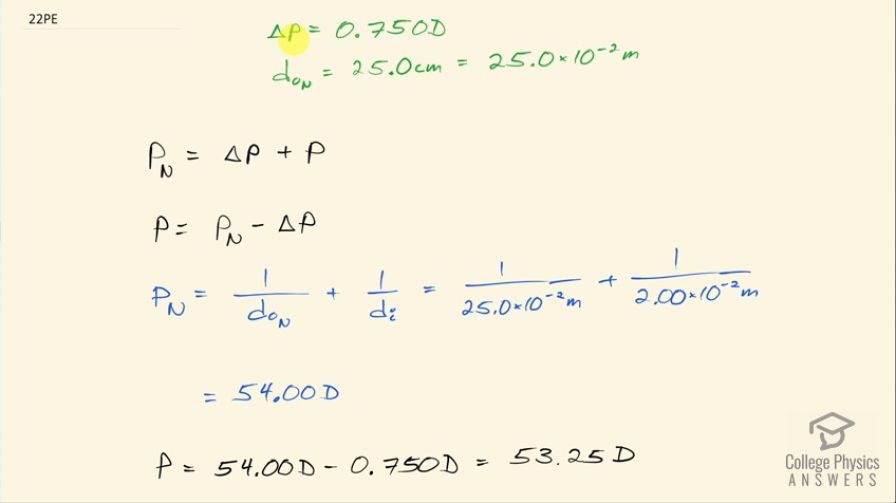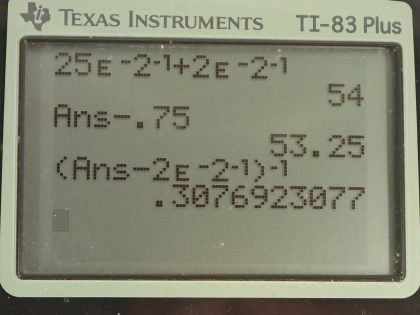Question
A mother sees that her child’s contact lens prescription is 0.750 D. What is the child’s near point?
Final Answer
Solution video
OpenStax College Physics for AP® Courses, Chapter 26, Problem 22 (Problems & Exercises)

vote with a rating of
votes with an average rating of
.
Calculator Screenshots
Video Transcript
This is College Physics Answers with Shaun Dychko. This child's contact lens prescription has a power of 0.750 diopters and the question is what is the near point of the child without any contact lenses? So the object distance at the near point for normal vision is 25.0 centimeters which is 25.0 times 10 to the minus 2 meters; now that's important because we will use that to figure out what the power is for normal vision at the near point. So the normal vision power at the near point is this correction plus the power of the child's eye when there are no contact lenses and that's labeled P here and we know that this has to add up to normal vision because that's the purpose of this ΔP— this correction is to create normal vision given the atypical vision that the unaided eye has. So we'll solve this for P by subtracting ΔP from both sides and so the power of the child's eye unaided is normal power minus the correction—ΔP— and the normal power when looking at the near point is 1 over the object distance at the near point plus 1 over the image distance and that's 1 over 25 times 10 to the minus 2 meters plus 1 over 2.00 centimeters, which is the distance between the lens and the retina for a regular eye and this is 54.00 diopters. So that means the power of this child's eye without correction is 54.00 diopters minus the 0.750 diopters which is 53.25 diopters and so now the question is what is the object distance given this power? And so the power with no correction P is 1 over the object distance with no correction plus 1 over the image distance and we'll subtract 1 over d i from both sides and we get 1 over the object distance then is the power minus 1 over d i then we raise both sides to the power negative 1 and we get that the object distance of the near point then is the power at the near point minus 1 over the image distance all to the negative 1 that's 53.25 diopters minus 1 over 2.00 times 10 to the minus 2 meters all to the negative 1 and this works out to 30.8 centimeters— this is the near point of the child with no correction.
